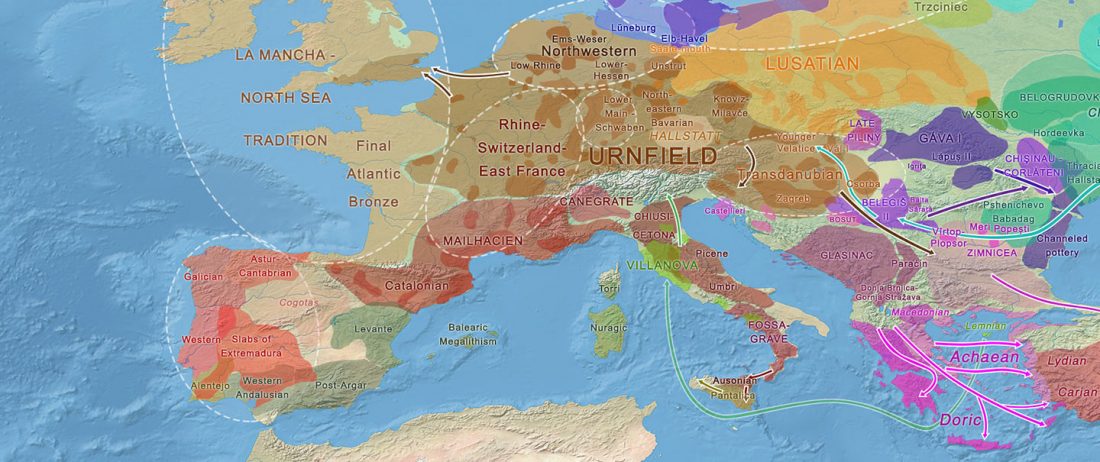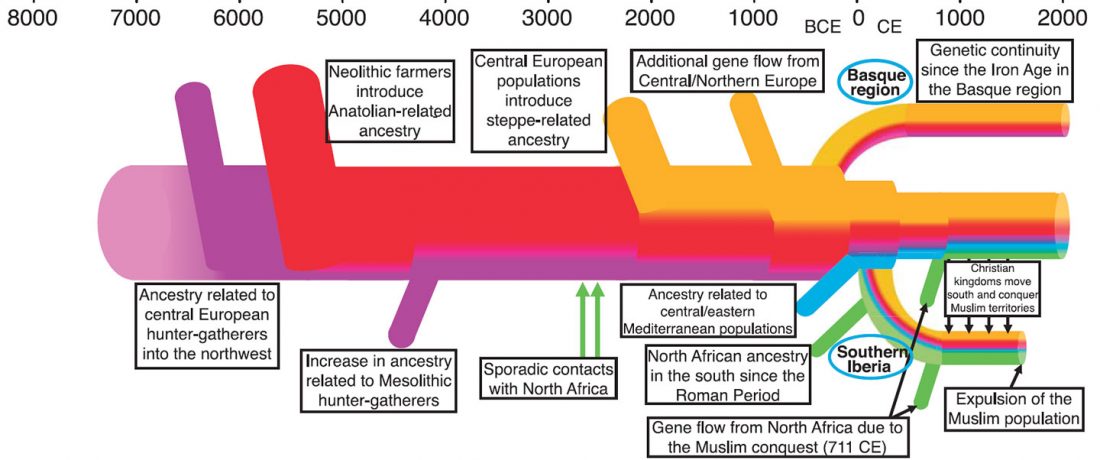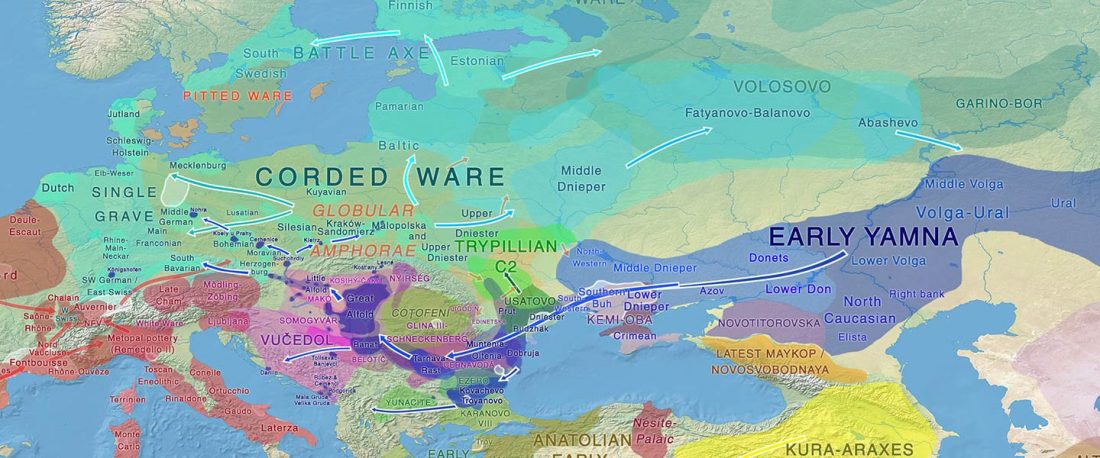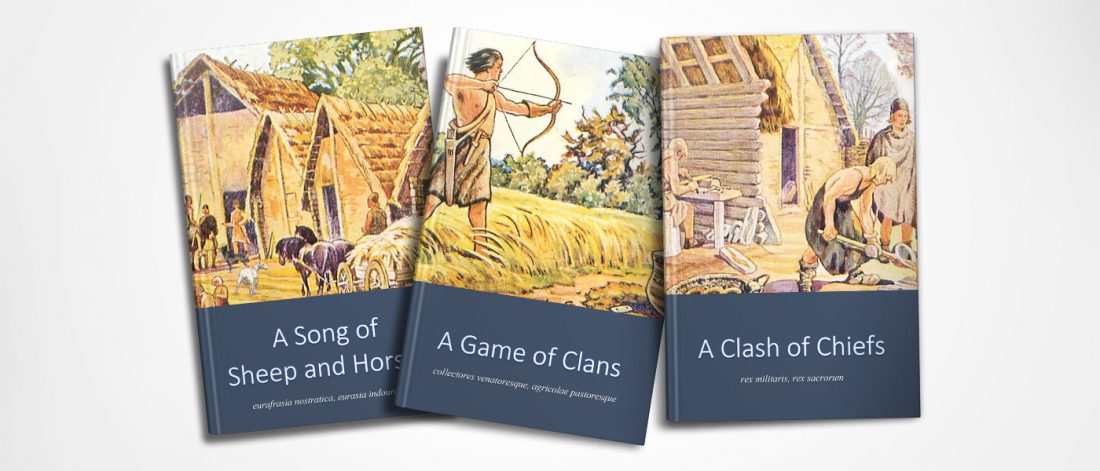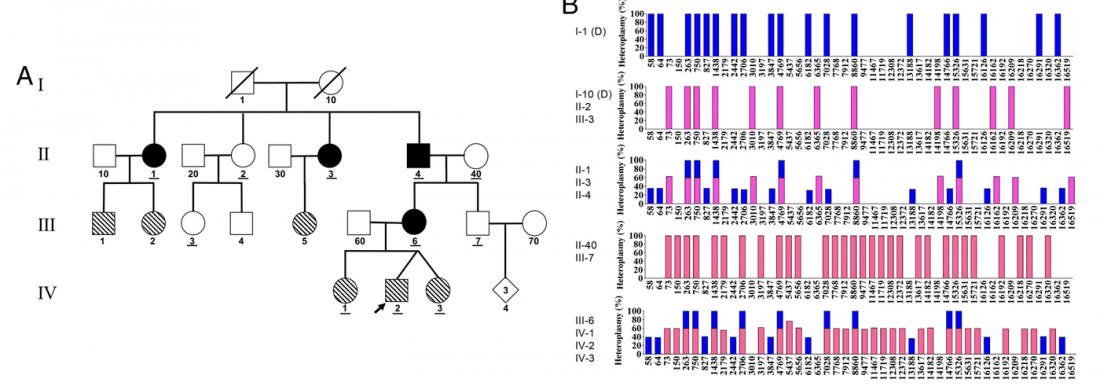As you can see from my interest in the recently published Olalde et al. (2019) Iberia paper, once you accept that East Bell Beakers expanded North-West Indo-European, the most important question becomes how did its known dialects spread to their known historic areas.
We already had a good idea about the expansion of Celts, based on proto-historical accounts, fragmentary languages, and linguistic guesstimates, but the connection of Celtic with either Urnfield or slightly later Hallstatt/La Tène was always blurred, due to the lack of precise data on population movements.
The latest paper on Iberia is interesting for many … Read the rest “Haplogroup R1b-M167/SRY2627 linked to Celts expanding with the Urnfield culture”
New paper (behind paywall), The genomic history of the Iberian Peninsula over the past 8000 years, by Olalde et al. Science (2019).
NOTE. Access to article from Reich Lab: main paper and supplementary materials.
Abstract:
We assembled genome-wide data from 271 ancient Iberians, of whom 176 are from the largely unsampled period after 2000 BCE, thereby providing a high-resolution time transect of the Iberian Peninsula. We document high genetic substructure between northwestern and southeastern hunter-gatherers before the spread of farming. We reveal sporadic contacts between Iberia and North Africa by ~2500 BCE and, by ~2000 BCE, the replacement
…
Read the rest “Iberia: East Bell Beakers spread Indo-European languages; Celts expanded later”
Maps of expansion of “Steppe ancestry” with (Pre-)Yamnaya/Bell Beaker and Corded Ware, from the collection of Maps of prehistoric migrations.
For context and reference, please read the book on Indo-European and Uralic migrations.
Post Series
Here is the updated list of posts on the subject of tracking and mapping Steppe ancestry through the ages:
5. Spread of Indo-European and Uralic speakers in ADMIXTURE, 23 December 2019.
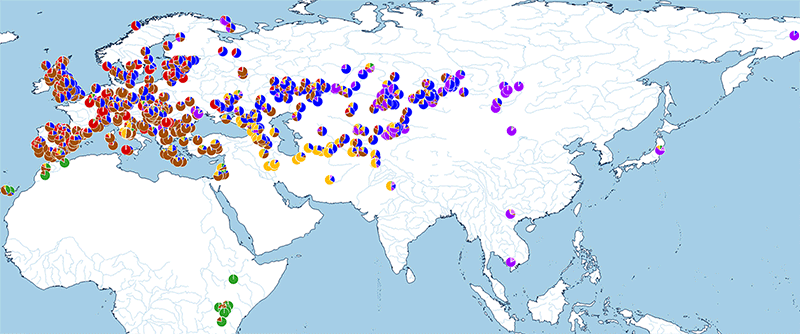
4. North-West Indo-Europeans of Iberian Beaker descent and haplogroup R1b-P312, 18 August 2019.
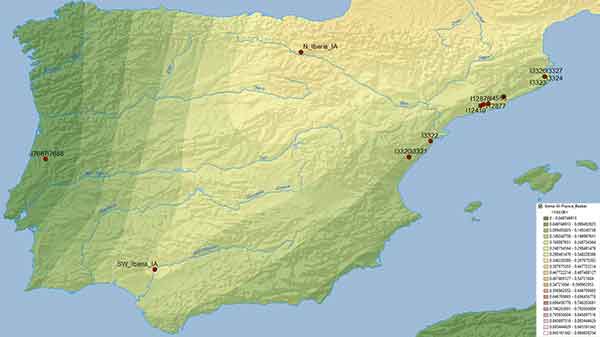
3. Yamnaya ancestry: mapping the Proto-Indo-European expansions, 5 August 2019.
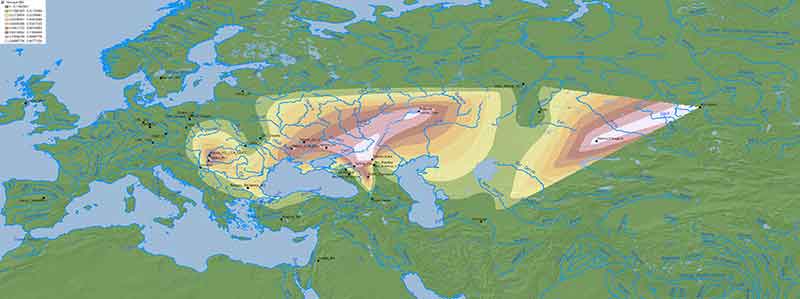
2. Corded Ware ancestry in … Read the rest “Yamnaya steppe ancestry”
This is a post I wrote in November 2018 to answer the absurd theories that had been published in the past 3 years. I decided not to publish it then, seeing how many “R1a/CWC=IE”-fans were at risk of having a stroke due to the most recent developments in population genomics. Now, in february 2019, it seems like the right time of general relax after some drought in genetic papers (and some more “steppe ancestry=IE” inventions) to publish it with some funny additions. For those of you interested in DNA “calculators” and similar tools like Eurogenes, you should read this before … Read the rest “The “Indo-European Corded Ware theory” doesn’t hold water”
Given my reduced free time in these months, I have decided to keep updating the text on Indo-European and Uralic migrations and/or this blog, simultaneously or alternatively, to make the most out of the time I can dedicate to this. I will add the different ‘A Song of Sheep and Horses (ASoSaH) reread’ posts to the original post announcing the books. I would be especially interested in comments and corrections to the book chapters rather than the posts, but any comments are welcome (including in the forum, where comments are more likely to stick).
This is mainly a … Read the rest “ASoSaH Reread (I): Y-DNA haplogroups among Indo-Europeans (apart from R1b-L23)”
Sorry for the last weeks of silence, I have been rather busy lately. I am having more projects going on, and (because of that) I also wanted to finish a project I have been working on for many months already.
I have therefore decided to publish a provisional version of the text, in the hope that it will be useful in the following months, when I won’t be able to update it as often as I would like to:
…
Read the rest “Happy new year 2019…and enjoy our new books!”
The PCA is obtained using Reich Lab’s Eigensoft SmartPCA together with its curated dataset, the Allen Ancient DNA Resource (currently v. 44.3 – Jan 20, 2021), but also including more recently published datasets. They correspond roughly to the samples which have ADMIXTURE values in the Ancient DNA Dataset. Some graphs are modified to illustrate the relation between populations and their movements. A detailed description of these ancestral populations and potential expansions with archaeological cultures associated with certain languages will be found in the books.
Please report any errors by writing an email to [email protected], attaching the necessary … Read the rest “PCA and Admixture of Eurasian populations”
New paper Biparental Inheritance of Mitochondrial DNA in Humans, by Luo et al. PNAS (2018).
Interesting excerpts (emphasis mine):
Abstract
Although there has been considerable debate about whether paternal mitochondrial DNA (mtDNA) transmission may coexist with maternal transmission of mtDNA, it is generally believed that mitochondria and mtDNA are exclusively maternally inherited in humans. Here, we identified three unrelated multigeneration families with a high level of mtDNA heteroplasmy (ranging from 24 to 76%) in a total of 17 individuals. Heteroplasmy of mtDNA was independently examined by high-depth whole mtDNA sequencing analysis in our research laboratory and in two Clinical
…
Read the rest “Biparental inheritance of mitochondrial DNA in humans”
This is the fourth of four posts on the Corded Ware—Uralic identification:
Let me begin this final post on the Corded Ware—Uralic connection with an assertion that should be obvious to everyone involved in ethnolinguistic identification of prehistoric populations but, for one reason or another, is usually forgotten. In the words of David Reich, in Who We Are and How We Got … Read the rest “Corded Ware—Uralic (IV): Hg R1a and N in Finno-Ugric and Samoyedic expansions”
